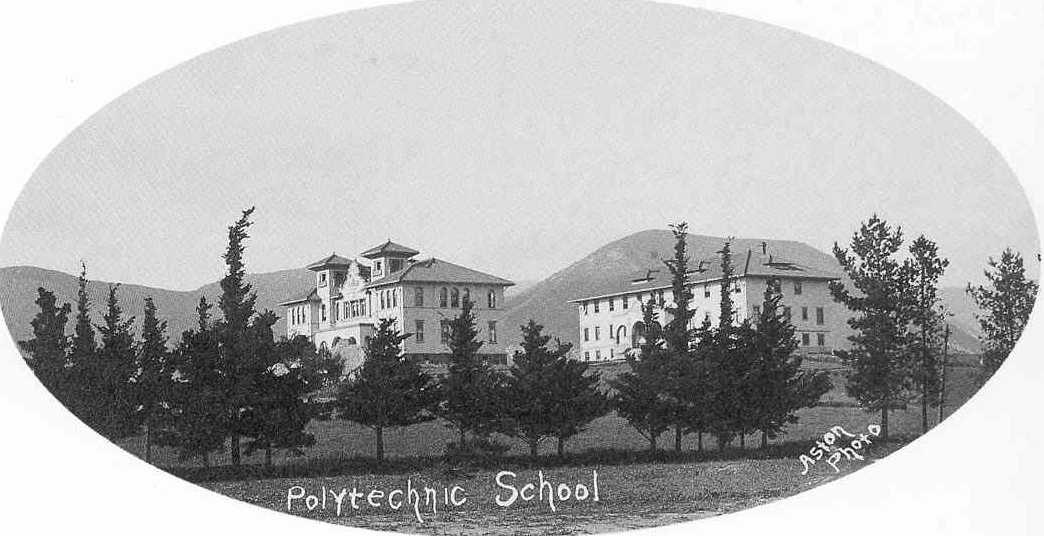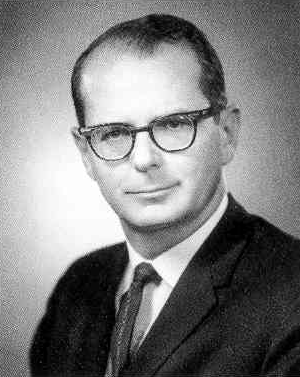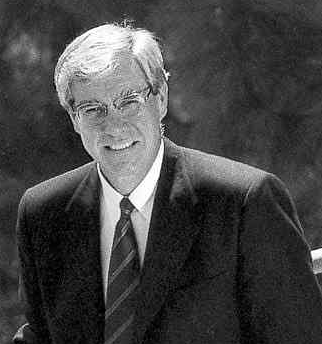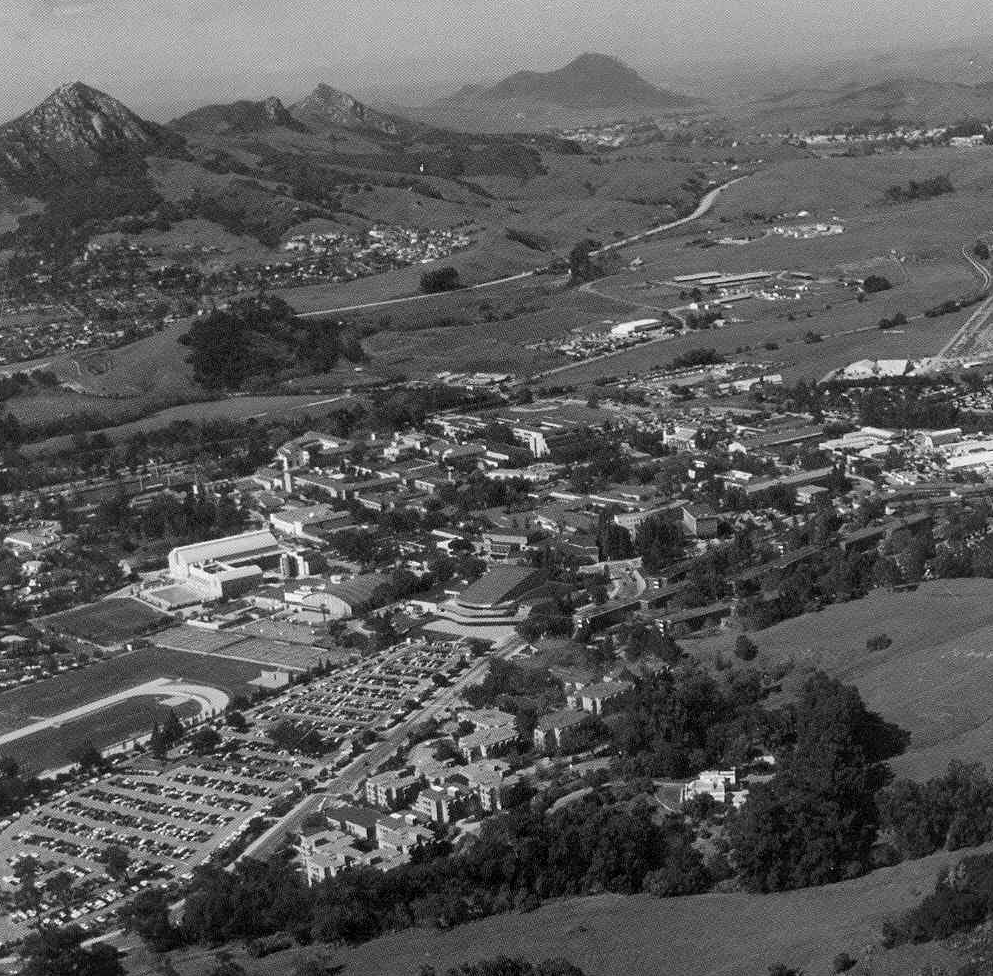-
Notifications
You must be signed in to change notification settings - Fork 2
Introduction
Before discussing the history of the Computer Science Department, we need some background on the city and university in which the department started. So lets look at some history of the central coast of California and how San Luis Obispo and Cal Poly got started.[^1]
San Luis Obispo, Ca., a city of 44,000, lies half way between Los Angeles and San Francisco along Highway 101, about 8 miles from the Pacific Ocean at an elevation of 300 feet. Early residents of the Central Coast were Chumash Indians.
One of the first central coast explorers was Juan Rodriguez Cabrillo who sailed into northern Santa Barbara Channel in mid-October 1542. He was favorably impressed with the Native Americans, the Chumash, who followed a hunting and gathering lifestyle, both marine and inland between Malibu in the south and Cayucos in the north. He observed that these Indians of the Central coast wore animal skins and tied their hair with tiny daggers of bone, flint and wood embedded in the braids, and were capable of sailing great distances in their tar-caulked canoes.
In 1765, King Charles III appointed Jose de Galvez as “Visitador General” of New Spain (California Territory). Galvez assumed that Russia in their expansion east through Siberia might pose a threat to take over the California territory, so he organized Father Junipero Serra, Father Juan Crespi and their band of energetic priests, together with the soldier-explorer, Gaspar de Portola and his 63 soldiers to explore and colonize alta California. They left San Diego on July 14, 1769, blazing a trail which for the most part became El Camino Real, California’s trail of 21 missions between San Diego and San Francisco. This party of men consisted of 200 horses and pack animals, and was about a half mile long, traveling single file on a narrow trail.
The missions served a dual purpose. First, from the standpoint of Spain, the missions were a low-cost way of colonizing frontier lands. With just a handful of soldiers and missionaries, the Native Americans could be converted to Christianity and made loyal citizens of Spain. A Franciscan mission was intended to become within one or two decades a self-sufficient Hispanic village. The Franciscans could then be assigned to fresh frontier lands. Second the church would then benefit by later converting the mission to a parish, staffed by regular parish priests, under the supervision of a bishop.
Father, Junipero Serra, established the San Luis Obispo Mission on September 1, 1772 and set Joseph Caveller in charge with 5 soldiers and two missionized Indians and left for San Diego. During Caveller’s 17 years of administration, there had been regular agricultural surpluses above what the mission needed to sustain itself, a tribute to the fertile lands in the central coastal valleys. The mission was sufficiently prosperous to make an indirect contribution toward the cost of Spain in fighting England during the American Colonies’ war of independence. In 1782 the assessment for each of the California Missions was approximately $1000.00. To this extent, San Luis Obispo played a tiny part in the success of the 13 Colonies in winning their independence.
From 1521 until 1822, the mission enterprises thrived under Spain’s policy of protectionism and benevolent neglect. Mexico took over California in 1822, but Mexico’s political, economic and social instability all were real problems. Sustaining the government in Alta California had a high cost for Mexico.
The Mexican war (1846-1848), was fought between the United States and Mexico. The following disagreements led up to the war. When Texas revolted against the Mexican Government in 1836, Mexico refused to recognize its independence. Mexico warned the United States that if Texas were admitted into the union, Mexico would declare war. In 1845 Texas was made a state, Mexico broke off relations with the U. S. but did not declare war. There was a dispute over the boundary between Mexico and Texas. Mexico owed the U.S. $3 million for lives and property lost in the Mexican revolution. Also the feeling persisted in the U.S. that the country needed to expand westward. Shortly after James Polk became President, he sent John Slidell to Mexico to purchase the territories of California and new Mexico for forty million dollars. The Mexican government refused the offer, so Polk tried to start a war by stationing American troops in disputed territory. As hoped, the Mexicans attacked and the United States Congress declared war on Mexico on May 13, 1846.
In the course of the war, United States forces invaded Mexico and occupied the Capital, Mexico City. By the treaty of Guadalupe Hidalgo, the U.S. acquired from Mexico, the regions of California, Nevada, Utah and parts of Arizona, New Mexico, Colorado and Wyoming. Thus San Luis Obispo became a part of the United States.
The City of San Luis Obispo serves as the commercial, governmental and cultural hub of California’s Central Coast. One of California’s oldest communities, it began with the founding of Mission San Luis Obispo de Tolosa in 1772 by Father Jun' ipero Serra, the fifth mission in the California chain of 21 missions. The mission was named after Saint Louis, a 13th Century Bishop of Toulouse, France. San Luis Obispo is Spanish for literally the phrase, `"Saint Louis, the Bishop.`" First incorporated in 1856 as a General Law City, it became a Charter City in 1876.
Cal Poly’s 400 acre central core campus lies at the northeast edge of San Luis Obispo, providing sweeping views of nearby peaks and valleys. To the north, an additional 5,651 acres of campus are devoted to farming, experimental architecture, and other outdoor laboratory study, making Cal Poly’s one of the largest campuses in the nation. Students live both on-campus and off.
In 1901 San Luis Obispo was a farm and rail community of just over 3,000 people. The long awaited arrival of the railroad from the north in 1894, followed in 1901 by connecting rail link to Los Angeles, opened the central coast of California to the major cities and economic centers in the state. And it was on March 8, 1901, that legislation founding California Polytechnic School was signed into law after six years of debate.

Early Photograph of Cal Poly.
Cal Poly emphasized learning by doing and earning while learning and established once and for all Poly’s applied laboratory approach to education. In 1972, California Polytechnic College was renamed California Polytechnic State University and currently (2002) has 18,000 students with research, teaching and a graduate MS program in most disciplines.
Cal Poly carries out its “learn by doing” via hands-on learning through a project and design-centered curriculum. In the College of Engineering there are more than 80 laboratories occupying 160,000 square feet.[^2]

Julian A. McPhee, President of Cal Poly, 1933-1966, strongly advocated “hands-on” learning through project and design centered courses.

Robert Edwin Kennedy, President of Cal Poly, 1967-1979, said, “We believe it is not a question of either occupational or broad cultural training. Education must include both. And it should be remembered that the difference in emphasis and the ways and means used by different colleges give American education much of its strength.”

Warren J. Baker, President of Cal Poly, 1979-2011, “Cal Poly is in a state of transition–a transition that will certainly preserve the character of Cal Poly, but will change the way in which that character is manifested. Not only is this change desirable, it is necessary if we are going to maintain the momentum Cal Poly has gathered and take the next steps to become a truly great university...”

Jeffrey Armstrong, President of Cal Poly since 2011.

Cal Poly Campus and background mountains.
[^1]: San Luis Obispo county, Winsor Publications, Inc. second Edition,1990.